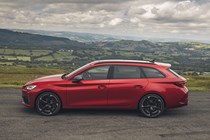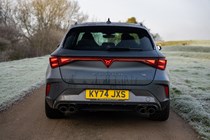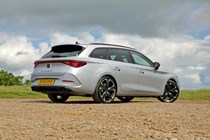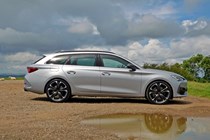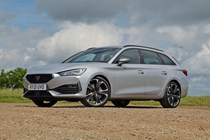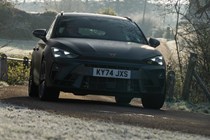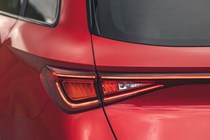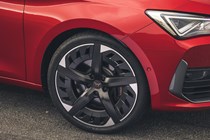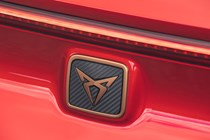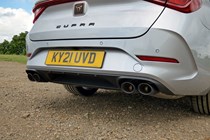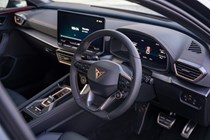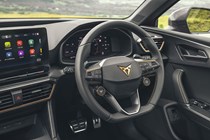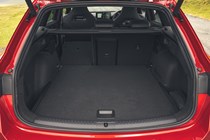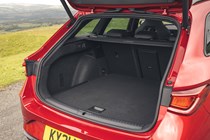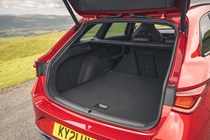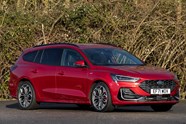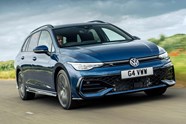
Cupra Leon Estate review
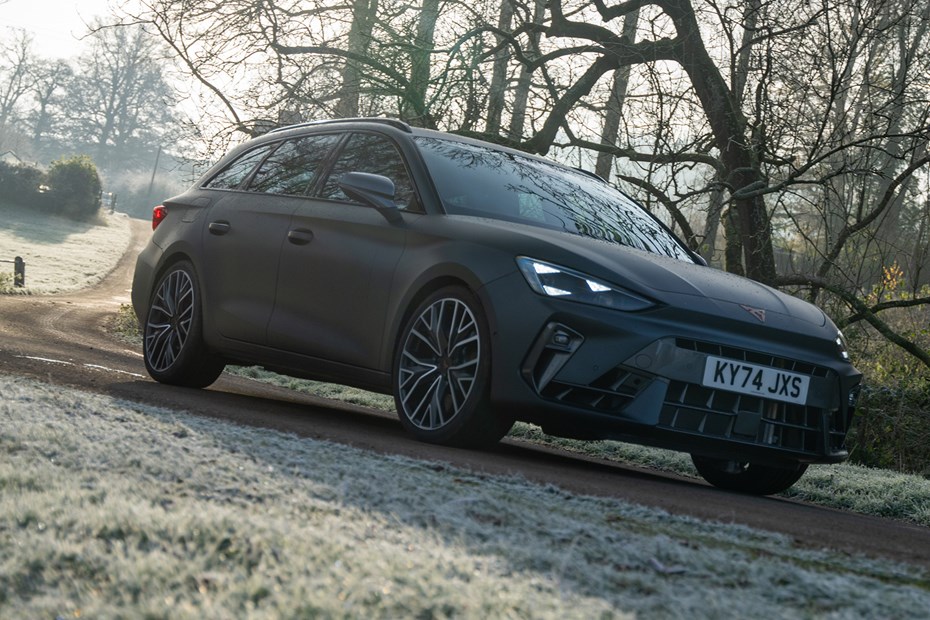
At a glance
| Price new | £34,455 - £53,470 |
|---|---|
| Used prices | £14,655 - £34,210 |
| Road tax cost | £195 - £620 |
| Insurance group | 20 - 34 |
Get an insurance quote with

|
|
| Fuel economy | 32.8 - 54.3 mpg |
| Miles per pound | 4.8 - 8.0 |
| Number of doors | 5 |
| View full specs for a specific version | |
Available fuel types
Petrol
Hybrid
Pros & cons
- Plenty of kit
- Very little compromise on comfort
- Blends performance with load-lugging ability
- Infotainment system takes a long time to get used to
- Is it different enough over the old model?
- Automatic only, if that matters
Cupra Leon Estate rivals
Overview
The Cupra Leon Estate car is an elongated, load-lugging version of the fast Leon hatch. As a member of Volkswagen’s MQB platform product family, it shares underpinnings with the VW Golf Mk8 estate and Audi A3, and so the same range of engines offered in those cars is available here, too. From basic 150hp petrols to a new halo 333hp all-wheel drive barnstormer – they may all come in copper, but there are plenty of flavours to choose from.
The Cupra Leon Estate was subjected to a facelift for 2024. The revisions include a redesigned front end, sculpted into the style of a more menacing ‘shark-nose’, the addition of new triangular LED lights and one illuminated logo at the rear. The interior has had a few tucks, too – a redesigned centre console that boasts plenty of piano-black plastic, while other fresh materials can also now be found around the cabin.
But the biggest story of the update has been the revised engine lineup. Gone is the 310hp petrol, and in its place a 333hp petrol has arrived with all-wheel drive and a trick new rear differential for greater agility through corners. A couple of plug-in hybrids are also on offer, plus a few mild-hybrid petrol options.
As for rivals, the closely related Skoda Octavia vRS Estate and Volkswagen Golf R Estate are the direct competition, though smaller SUVs also can’t be discounted as practical family cars with a little bigger boot. To find out how the Cupra Leon Estate stacks up, read on for the full review from Parkers.
To find out how I reached my verdict, head over to our how we test cars explainer page for everything you need to know. Or, if you’d rather consume the information in this review in a more visual manner, scroll down for the Parkers video review of the Cupra Leon Estate.
Watch our Cupra Leon Estate video review

What’s it like inside?
Anyone familiar with recent Volkswagens or their various cousins might recognise some of the Leon Estate’s switchgear, but the fit and finish is unmistakeably Cupra. The cabin has a dark tone, rife with copper-coloured accents around the vents, central console and steering wheel.
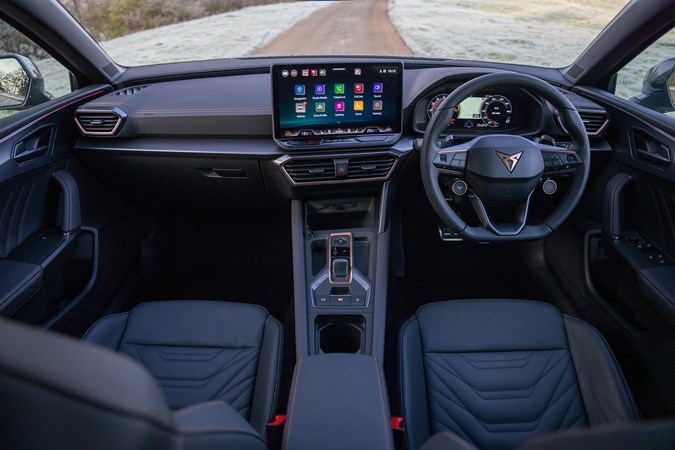
Many of the components, including those just mentioned, are particularly angular, echoing – now stay with me here – an almost Lamborghini-esque fighter jet Italian style. It’s nowhere near on the grandiose scale of a Bolognese V12, but they help to amplify the car’s sporty flavour. This sense is also enhanced by the positioning of the central console and the infotainment display, which are both subtly angled towards you as the driver for light a cockpit feel.
The whole cabin is well-built, without any shakes or rattles, while the seats are supportive and comfortable. Shoulder-hugging carbon-backed racing chairs are available on the highest trims, but they detract from the comfort value – only worth opting for if you really want to push your Leon Estate hard.
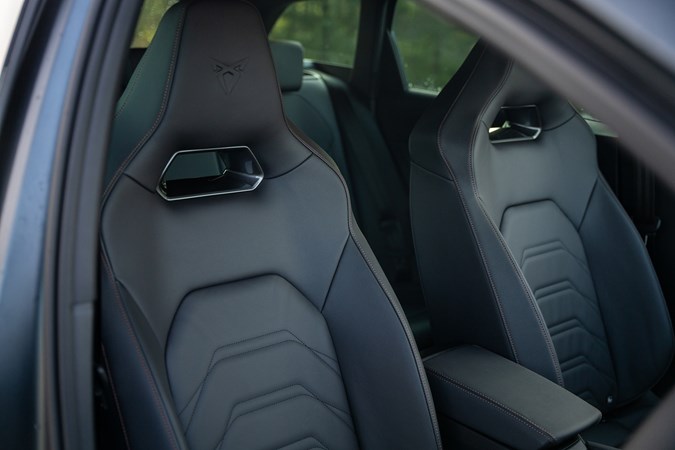
Owing to its Volkswagen parent, the Leon Estate also benefits from the German brand’s latest infotainment system. I’m happy to report that the new software is fast and responsive, while the display itself is big and clear. I’d have preferred a few more physical buttons – almost everything is controllable via the display – but you’d likely soon get used to the display functions as an owner. The steering wheel is a little harder to decipher with its array of monotone switches.
What’s it like to drive?
The Cupra Leon Estate that I tested was a halo 333hp model with all-wheel drive. It was a riot. Owing to the four-wheel distribution of power, traction off the line was thrilling. Especially in the tightened-up driving modes – more on those later – the pull felt immediate, suggesting a little more power than the spec sheet declares. In its softest suspension setting, the Leon Estate felt more relaxed, but the ride was still tauter than your average compact estate. It’s a performance-orientated machine this and the ride attests, so it’s worth knowing what you’re signing up for before putting pen to paper as your daily driver.
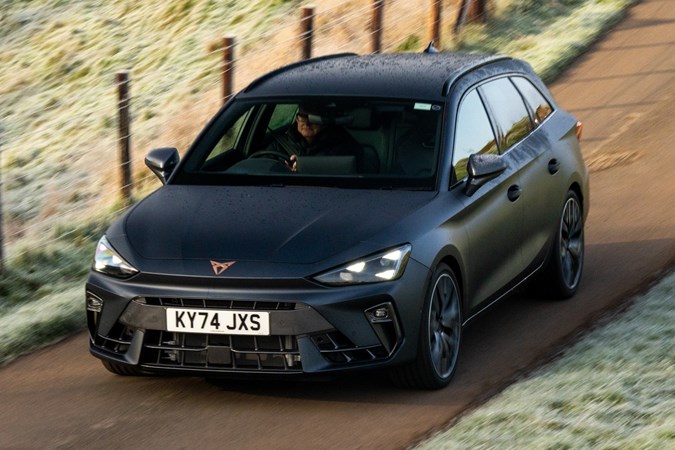
In its keenest Cupra mode, everything got a little sharper. Shifting from gear to gear became almost instantaneous, yet still with a smooth transfer of power between cogs. Coupled with some slightly heavier yet still direct steering, the whole estate became a bit more of a focussed performance brute. The chassis felt nimble and responsive to my inputs, happy to be flicked about along country roads with enough power to thrill me but not enough to put my licence at risk. That said, there was still an overtone of maturity to the experience. It may look menacing, but a slight absence of raw theatre lent a grown-up feel to this estate, which may appeal to certain drivers.
This is further helped by the artificial engine sound piped into the cabin being tastefully subtle, while the exhaust emits fewer pops and bangs than its hatchback counterpart.
The 2024 Leon Estate that I drove also had an innovative new ‘torque splitter’ fitted to the rear axle – a hand-me-down from the previous generation Audi RS3. This clever tech can send additional power to the outside rear wheel when cornering for improved agility. It’s only subtle, but I could sense the car’s heightened level of nimbleness on the road. Worth considering if you want to go chasing thrills.
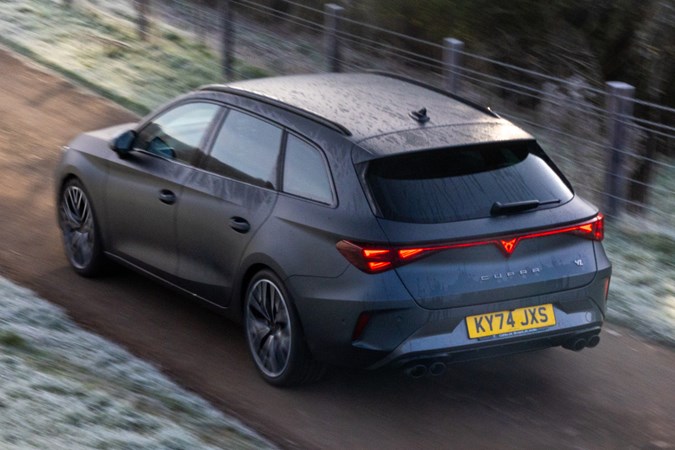
We haven’t yet tested any of the other 2024 Leon Estate model engines, but we shall endeavour to get behind their respective wheels as soon as possible. Keep an eye out for more updates to this page in the near future, including a thorough test of the plug-in hybrids.
What models and trims are available?
The Cupra Leon Estate model lineup is split into six trims: V1, V2 and V3, then VZ1, VZ2 and VZ3 at the top end. The available engines are matched to a trim band, and so can’t be spec’d to the other. Let me break it down…
If you opt for one of the lower three grades, V1, V2 or V3, you only have three engines to choose from: a manual 150hp petrol, a 150hp mild-hybrid auto petrol or a 204hp plug-in hybrid petrol. VZ1, VZ2 and VZ3 can be spec’d with either a 272hp plug-in hybrid or the range-topping 333hp all-wheel drive petrol.
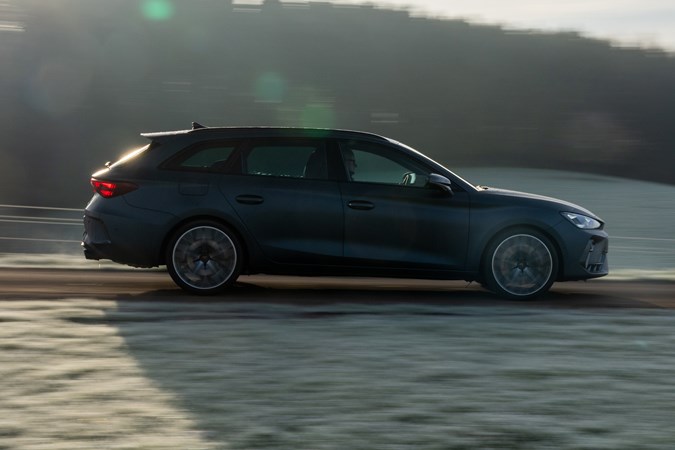
The entry-level V1 trim includes a decent amount of kit as standard, including keyless entry, adaptive cruise control and the 12.9” infotainment system to name a few. Wireless Apple CarPlay and wireless phone charging are also thrown in as standard.
V2 introduces an electric tailgate to the estate, as well as electrically adjustable and heated front seats. A rear-view camera and dynamic chassis control are also included in this trim. V3 is top end of the bottom half, and includes fancier upholstery leather plus a raft of uprated safety systems, including an advanced lane assist.
The most basic VZ trim resets a few features back to lower V grade. VZ1 includes heated and electrically adjustable seats, Cupra’s Matrix LED headlights and dynamic chassis control, but reverts back to the black Dinamica upholstery trim of V2.
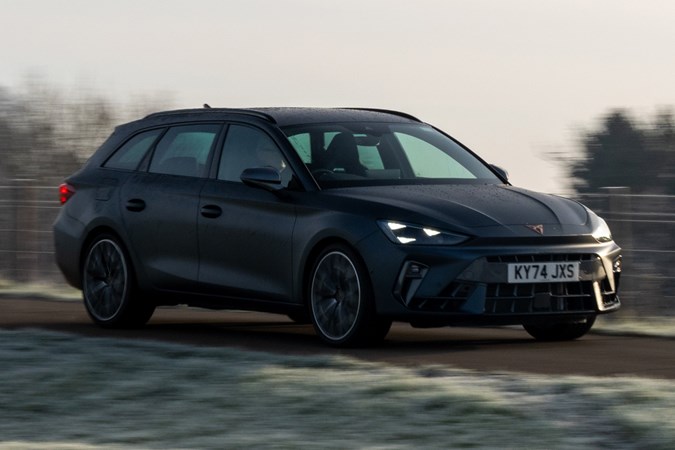
VZ2 upgrades the upholstery to a metallic leather once again, and includes an intelligent park assist system for to keep your extremities safe during manoeuvres, but it’s the VZ3 trim you’ll want for the greatest interior performance focus. A Sennheiser sound system and carbon-backed bucket seats are included in top-of-the-range VZ3 cars, along with uprated performance brakes.



